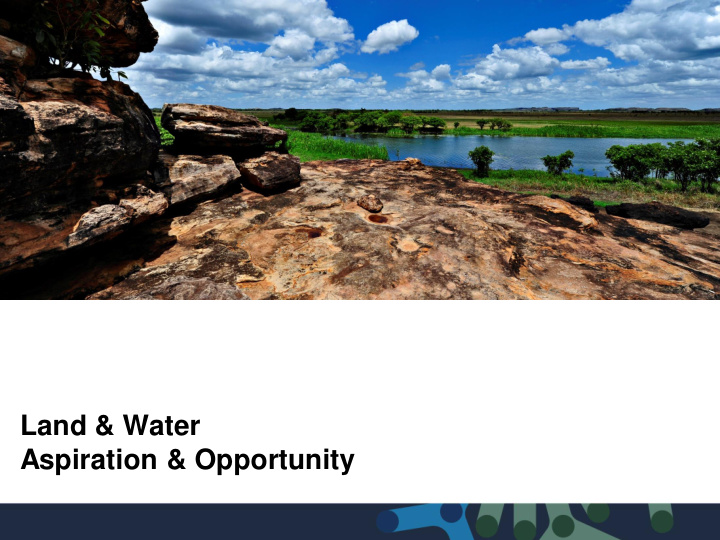



Land & Water Aspiration & Opportunity
A BRIEF HISTORY The Indigenous Land and Sea Corporation (ILSC) is a corporate Commonwealth entity established under the ATSI Act and subject to the PGPA Act. The ILSC assists Aboriginal and Torres Strait Islander people to realise economic, social, cultural and environmental benefits that the ownership and management of land, water and water related rights can bring. The ILSC provides this assistance through the acquisition and management of rights and interests in land, salt water and fresh water country. The ILSC’s primary governing legislation is Part 4A of the Aboriginal and Torres Strait Islander Act 2005. INDIGENOUS LAND AND SEA CORPORATION INDIGENOUS LAND CORPORATION 2
Cultural, Social, Environmental & Economic Benefit The ILSC has priority outcomes for achieving Since 1995, the ILSC has Indigenous benefits: Access to and protection of cultural and purchased 262 properties environmental values: The ILSC recognises the importance of land to Indigenous people’s covering more than 6.1 million cultural identity. We are committed to assisting hectares in remote, rural, and Indigenous people acquire and manage land of urban Australia. Of these, 198 or cultural and environmental significance, and to protecting and maintaining the cultural and 76% have been granted to environmental values of land. Indigenous organisations. Socio-economic development: The ILSC assists projects that deliver social and economic outcomes for Indigenous Australians. Priority is given to projects that provide sustainable employment and training that leads to employment. The ILSC believes that sustained employment creates a range of benefits for Indigenous people, including increased standards of living, income and improved health and wellbeing. By committing to these priorities, the ILSC is helping to build a secure and sustainable Indigenous land base, now and for future generations. INDIGENOUS LAND AND SEA CORPORATION INDIGENOUS LAND CORPORATION
SOME OF THE ISSUES Limited resources – potential to be diminished Growing Indigenous population Remote focus – raises questions of equity No urban strategy Efficiency of group operations – cost of administration Relationships with groups on the ground Silo Mentality No ability to invest in freshwater/saltwater country/opportunities Bureaucratic approach to private enterprise Understanding our function, to achieve Indigenous benefit through land & water acquisition and management, meant that we had to do business differently 1. Became ILSC. 2. Future Fund. 3. New Business Model INDIGENOUS LAND AND SEA CORPORATION INDIGENOUS LAND CORPORATION 4
THE ROLE OF AG-CO INDIGENOUS LAND CORPORATION INDIGENOUS LAND AND SEA CORPORATION 5
YAMANAH INVESTMENTS • Trial new business model • Within a finite region, • Traditionally under-invested by ILSC • Aspiration/Opportunity • Meet people at their point of need/at the point of opportunity • Proactive not reactive • Regional Scan process • Innovative investment models – all coming back to land and water • Clearly see our role as facilitators, brokers of knowledge and opportunity INDIGENOUS LAND AND SEA CORPORATION INDIGENOUS LAND CORPORATION 6
THE ROLE OF AG-CO • How do we support people Mixed economies/Altman’s hybrid economies grow the market sector? Intersection of Customary, State and Market • De-risk private capital and enterprise to play a role Market • Public sector enabling infrastructure, including financial infrastructure State Customary Deep community engagement, genuine relationships of trust, “honest brokers” Do you see roles for yourselves? If so, what? INDIGENOUS LAND AND SEA CORPORATION INDIGENOUS LAND CORPORATION 7
Recommend
More recommend